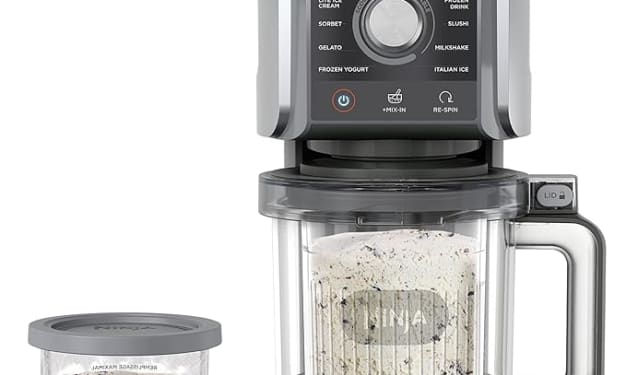DST Files in Embroidery Digitizing
The Importance of DST Files in Embroidery Digitizing

Embroidery digitizing is a complex process that transforms artwork into a stitch file that embroidery machines can read and execute. Among the various file formats used in this industry, the DST (Data Stitch Tajima) file stands out due to its widespread acceptance and reliability. Understanding the importance of DST files in embroidery digitizing can significantly enhance the quality and efficiency of your embroidery projects.
DST File Conversion Online for Embroidery
DST File Conversion Online Looking to convert your logo, embroidery designs, or images into DST files? Image2Emb offers a reliable DST file conversion service that transforms any design into a ready-to-embroider DST file. The DST file converter by Image2Emb is backed by a team of dedicated digitizers who manually digitize each design to ensure the highest quality. Enjoy the lowest prices and a fast turnaround time when you choose Image2Emb for your DST file conversion needs.

1. Universal Compatibility
DST files are universally recognized by most commercial and home embroidery machines. This broad compatibility ensures that a single DST file can be used across different machine brands and models, such as Brother, Janome, and Bernina. This versatility makes DST files a preferred choice for embroiderers who work with multiple machines or need to share files across different platforms.
2. High-Quality Stitch Representation
One of the key reasons for the popularity of DST files is their ability to accurately represent stitch data. Each file contains detailed information about stitch positions, lengths, and types, ensuring that the final embroidery is an exact match to the digitized design. This precision is crucial for producing high-quality embroidery with consistent and professional results.
3. Efficient Data Storage
DST files are optimized for storing complex embroidery designs efficiently. They use a compact format that minimizes file size without compromising the detail and quality of the design. This efficiency is particularly important for large designs or when working with limited storage space on embroidery machines.
4. Detailed Stitch Control
A significant advantage of DST files is the detailed control they offer over the stitching process. The file includes commands for jumps, trims, and color changes, allowing the embroiderer to automate intricate patterns seamlessly. This level of control reduces manual intervention, speeds up the embroidery process, and minimizes errors.
5. Ease of Editing and Customization
Editing and customizing designs in DST format is straightforward with modern digitizing software. Tools like Wilcom, Hatch, and Brother PE-Design allow users to easily adjust stitch density, modify stitch lengths, and reorder stitch sequences. This flexibility is invaluable for making quick adjustments or personalizing designs to meet specific customer requirements.
6. Wide Support in Digitizing Software
Most embroidery digitizing software supports the DST format, making it easier for designers to create and export designs without worrying about compatibility issues. This broad support streamlines the workflow from design creation to machine execution, enhancing productivity and reducing the learning curve for new digitizers.
7. Robust Error Handling
DST files are designed with robust error handling capabilities. They can detect and report issues such as stitch count discrepancies and format inconsistencies. This feature helps in troubleshooting and ensures that the design is error-free before it is sent to the embroidery machine, saving time and materials.
8. Adaptability to Advanced Techniques
DST files are not limited to basic embroidery; they also support advanced techniques such as 3D puff embroidery, appliqué, and the use of specialty threads like metallic and variegated threads. This adaptability allows digitizers to explore creative possibilities and expand their offerings.
The DST file format plays a crucial role in the world of embroidery digitizing, offering a blend of compatibility, precision, and efficiency. Its ability to handle complex designs, facilitate easy editing, and support advanced techniques makes it an indispensable tool for both professional embroiderers and hobbyists. Understanding the importance of DST files can help you achieve superior embroidery results and streamline your digitizing process. Whether you are new to embroidery or an experienced digitizer, mastering the DST format is essential for success in this craft.
Structure of DST Files in Embroidery Digitizing
Understanding the structure of DST files is crucial for anyone involved in embroidery digitizing. These files contain detailed instructions that guide embroidery machines in stitching designs accurately. The structure of a DST file is composed of several key elements, each serving a specific purpose in the digitizing process.
Basic Format and Components
A DST file is essentially a sequence of commands and data points that the embroidery machine interprets to create a design. Here are the primary components of a DST file:
- Header Information
- Stitch Data
- Control Commands
Each of these components plays a vital role in ensuring the embroidery design is executed correctly.
File Header Information
The header of a DST file contains crucial metadata about the design. This information helps the embroidery machine understand the context and parameters of the design before starting the stitching process. The typical elements included in the file header are:
Design Name and Label
The design name is a brief identifier for the embroidery pattern. It helps in organizing and selecting designs within the machine or software.
Number of Stitches
This indicates the total count of stitches in the design. It helps in estimating the time required to complete the embroidery and in verifying the integrity of the file.
Number of Colors
The header includes information on the number of color changes required for the design. This is essential for setting up the correct thread colors and for planning the stitching sequence.
Design Dimensions
The overall width and height of the design are specified in the header. This ensures that the embroidery fits within the designated hoop size and helps in positioning the design accurately on the fabric.
Start and End Points
The coordinates of the starting and ending points of the design are included. This information is crucial for seamless integration of the design with other elements or for continuous stitching in multi-part designs.
Miscellaneous Metadata
Additional information such as design creation date, author, and any notes relevant to the design process might be included in the header.
Stitch Data Details
Following the header, the bulk of the DST file consists of stitch data. Each stitch is represented by a set of coordinates that dictate the needle’s movement. The primary elements of the stitch data are:
Stitch Coordinates
Each stitch is defined by its X and Y coordinates, which determine the needle's position relative to the starting point. These coordinates guide the machine in creating the design precisely as intended.
Stitch Type
Different types of stitches (e.g., running stitch, satin stitch) are encoded within the file. This information helps the machine switch between various stitching techniques seamlessly.
Control Commands
Commands for jumps (moving the needle without stitching), trims (cutting the thread), and color changes are embedded within the stitch data. These commands ensure that the machine performs necessary actions at the right time, maintaining the integrity of the design.
Control Commands and Additional Elements
Control commands are critical for the accurate execution of the embroidery design. These include:
Color Change Commands
Indicate when the machine needs to stop and change the thread color. This is essential for multi-color designs and ensures the correct color sequence.
Jump Commands
These commands move the needle to a new position without creating a stitch. Jumps are used to transition between different parts of the design without leaving unwanted stitches.
Trim Commands
Indicate where the thread should be cut. Trimming is important to avoid loose threads and to keep the design clean and professional-looking.
The structure of DST files is meticulously organized to ensure precise and high-quality embroidery output. By understanding the basic format and components, including the file header information, stitch data, and control commands, digitizers can create and edit DST files effectively. This knowledge not only helps in producing better designs but also in troubleshooting and optimizing the embroidery process. Whether you are a beginner or an experienced digitizer, mastering the structure of DST files is essential for achieving professional embroidery results.
Advanced Techniques in DST Digitizing
As embroidery digitizing evolves, so do the techniques and styles that can be applied to designs. Advanced techniques like 3D puff embroidery, appliqué integration, and the use of specialty threads such as metallic and variegated threads, can significantly enhance the aesthetic appeal and functionality of embroidered items. Here, we will explore these advanced techniques in the context of DST digitizing.
1. 3D Puff Embroidery
3D puff embroidery is a technique that adds dimension and texture to embroidery designs, creating a raised effect. This technique is particularly popular for logos and text on hats, bags, and other items where a bold, standout look is desired.
Key Steps in 3D Puff Embroidery:
Design Considerations:
Choose bold, simple designs. Fine details can get lost in the puff effect.
Ensure that the design is digitized with sufficient underlay stitches to support the raised foam.
Digitizing Process:
Underlay Stitches:
Create a strong foundation with underlay stitches. A dense zigzag or double zigzag underlay is commonly used.
Edge Walk:
Use an edge walk stitch to define the boundaries of the puff area. This helps in compressing the foam and creating sharp edges.
Satin Stitches:
Apply dense satin stitches over the foam. The stitch density should be increased compared to standard embroidery to compress the foam effectively.
Execution:
Place the foam on the fabric before starting the satin stitches. The embroidery machine will stitch through the foam, creating the raised effect.
2. Appliqué Integration
Appliqué is a technique where pieces of fabric are stitched onto a larger piece of fabric to create patterns or designs. This method is efficient for large areas of color and adds a unique texture to the embroidery.
Key Steps in Appliqué Integration:
Design Preparation:
Select the fabric for the appliqué. It should complement the base fabric and the overall design.
Digitize the appliqué design, starting with a placement stitch, followed by a tack-down stitch, and finishing with a cover stitch.
Digitizing Process:
Placement Stitch:
Create a running stitch outline where the appliqué fabric will be placed.
Tack-Down Stitch:
After placing the appliqué fabric, use a tack-down stitch to secure it in place. This is usually a running stitch that follows the outline again.
Cover Stitch:
Use a satin or decorative stitch to cover the raw edges of the appliqué fabric, ensuring a clean and professional finish.
Execution:
Place the appliqué fabric on the placement stitch line.
Run the tack-down stitch to secure the fabric.
Trim excess fabric around the tack-down stitch before applying the cover stitch.
3. Using Specialty Threads (e.g., Metallic, Variegated)
Specialty threads like metallic and variegated threads can add a unique look to embroidery designs, providing a shimmering effect or a multi-colored pattern that standard threads cannot achieve.
Key Steps in Using Specialty Threads:
Thread Selection:
Choose high-quality specialty threads that are compatible with your embroidery machine. Specialty threads can be more prone to breakage, so quality is crucial.
Machine Setup:
Adjust the machine's tension settings to accommodate the different properties of specialty threads. Metallic threads often require a looser tension compared to standard threads.
Use a needle specifically designed for specialty threads, such as a metallic needle, which has a larger eye to reduce friction.
Digitizing Process:
Stitch Density:
Reduce the stitch density slightly when using metallic threads to prevent thread breakage and allow for a smoother flow.
Stitch Length:
Increase the stitch length to reduce the stress on the thread and minimize breakage.
Underlay Stitches:
Use adequate underlay stitches to support the top stitches and prevent the metallic thread from sinking into the fabric.
Execution:
Test the design with the specialty thread before starting the final project. This helps in making any necessary adjustments to the digitizing and machine settings.
Monitor the machine during stitching to address any issues with thread tension or breakage promptly.
Incorporating advanced techniques like 3D puff embroidery, appliqué integration, and using specialty threads can greatly enhance the quality and uniqueness of your embroidery projects. Understanding the intricacies of these techniques and how to digitize them effectively in DST files will allow you to expand your creative possibilities and offer more sophisticated designs to your clients. Mastering these techniques not only requires practice but also a deep understanding of how each element interacts within the digitizing and embroidery process.
About the Creator
Abigail Kelly
As an embroidery author, I am passionate about the rich history and modern applications of this timeless art form. Join me in celebrating the beauty and versatility of embroidery.
Enjoyed the story? Support the Creator.
Subscribe for free to receive all their stories in your feed. You could also pledge your support or give them a one-off tip, letting them know you appreciate their work.






Comments
There are no comments for this story
Be the first to respond and start the conversation.